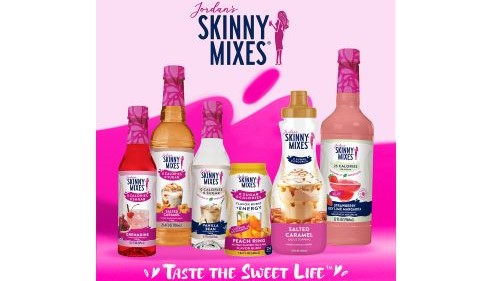News Briefs
- 6/5/2025
Diebold Nixdorf and LOC Software Enhance Self-Checkout

LOC Software, a retail management software provider, and Diebold Nixdorf, a global provider of checkout technology solutions, have partnered to simplify self-checkout solution implementation for retailers and enhance customer experiences with a fast, efficient, user-friendly system.
Laval, Quebec-based LOC’s ThriVersA software runs natively on Diebold Nixdorf’s self-checkout and kiosk systems, which will be mainly manufactured at the latter company’s global headquarters in North Canton, Ohio. ThriVersA’s unique design allows stores to use a single database for transactions of Diebold Nixdorf’s self-service solutions, point-of-sale (POS) terminals, or mobile devices. Additionally, its flexible-screen design allows cashiers and customers to easily navigate through workflows, helping stores optimize retail performance.
[RELATED: Diebold Nixdorf Shores Up In-House Production of Checkout and Kiosk Systems]
Diebold Nixdorf’s retail technology allows grocery and C-store operators to confidently deploy self-service solutions. Its self-checkout and kiosk systems are highly modular and open. Diebold Nixdorf also prioritizes service support, employing more than 2,000 technicians in North America to provide expert service when necessary.
“The Open Retailing approach is a key element of Diebold Nixdorf’s self-service solution design, ensuring a smooth interaction of both solutions,” said Ed McCabe, head of retail sales North America at Diebold Nixdorf.
Diverse solutions are immediately available.
- 5/28/2025
Tops Markets Launches Hot Spot for Summer Savings

Tops Markets LLC is helping consumers make the most out of summer while staying on budget. With the launch of its new Hot Spot for Summer Savings, the grocer is offering locked-in low prices on hundreds of brand favorites.
“Customers are looking for both convenience and value — and that’s exactly what we’re delivering,” said Ron Ferri, Tops president. “We’re locking in low prices on key items all summer long with Hot Spot, while still offering the best weekly deals in town. It’s about giving families more ways to save, without giving up the brands they love.”
Shoppers will find savings on essentials, including:
• Grill favorites like lean ground beef, hot dogs and fresh rolls
• Condiments and locally made sauces
• Beverages, from sparkling water to lemonade
• Paper goods and pantry basics
Tops joins other grocers in lowering prices this summer. Wegmans, Meijer, The Save Mart Companies, Giant Food and El Rancho Supermercado are all offering their own deals on seasonal essentials.
Based in Williamsville, N.Y., Tops operates 152 grocery stores spanning New York, Pennsylvania, and Vermont, including one franchise location. Northeast Grocery Inc. (NGI), the parent company of Market 32, Price Chopper and Tops Markets, is based in Schenectady, N.Y., and is No. 46 on The PG 100, Progressive Grocer’s 2025 list of the top food and consumables retailers in North America.
- 5/2/2025
Amazon Q1 Earnings Recap

Amazon has released financial results for its first quarter ended March 31.
Net sales increased 9% to $155.7 billion in Q1, compared with $143.3 billion in Q1 2024. Excluding the $1.4 billion unfavorable impact from year-over-year (YoY) changes in foreign exchange rates throughout the quarter, net sales jumped 10%. North America segment sales increased 8% YoY to $92.9 billion.
Operating income rose to $18.4 billion, compared with last year’s $15.3 billion. North America segment operating income was $5.8 billion, an uptick from last year’s $5.0 billion.
Net income increased to $17.1 billion, or $1.59 per diluted share, compared with $10.4 billion, or $0.98 per diluted share, in Q1 2024.
“We’re pleased with the start to 2025, especially our pace of innovation and progress in continuing to improve customer experiences,” remarked Andy Jassy, president and CEO.
For second quarter, the company expects net sales to be between $159.0 billion and $164.0 billion, or to grow between 7% and 11% compared with Q2 2024. This guidance anticipates an unfavorable impact of approximately 10 basis points from foreign exchange rates.
Operating income is expected to be between $13.0 billion and $17.5 billion.
Seattle-based Amazon is No. 2 on The PG 100, Progressive Grocer’s 2024 list of the top food and consumables retailers in North America. The company was also named among PG’s Retailers of the Century and its Most Sustainable Grocers list.
- 7/4/2024
Jordan’s Skinny Mixes Reveals Brand Refresh

On the heels of the brand’s 15th anniversary, Jordan’s Skinny Mixes, has launched its brand refresh. The refresh comes in response to valuable insights gathered from customer feedback and consumer surveys, which highlighted an opportunity to increase brand awareness and reach a broader audience through a more cohesive brand identity and by developing an ownable brand purpose and promise.
The better-for-you beverage enhancing company has declared its brand purpose to focus on energizing women with its mix of empowerment, community and inspiration. The brand’s purpose will come to life across all elements of the brand including, social, e-commerce, packaging, partnerships, creators and more.
[RELATED: Why Context Matters in Commerce]
The rollout of the updated packaging began in June, both in-store and online. By summer, consumers can expect to see the refreshed Jordan's Skinny Mixes branding across all products, as well as the Jordan’s Skinny Mixes website.
In 2023, Jordan's Skinny Mixes saw unprecedented growth with the rise of #WaterTok on TikTok. The brand's community expanded exponentially as users across social platforms began sharing their Jordan's Skinny Mixes water recipes online.
Jordan’s Skinny Mixes products are at local retailers across the United States, Canada and Europe.
- 5/14/2024
KIND Snacks Appoints Chief Customer Officer

KIND Snacks has hired a new chief customer officer. Beth Jarocki will take on that role for KIND North America, leading the company’s sales unit and overseeing strategic planning and growth opportunities. She reports to CEO Russell Stokes.
Jarocki will put her extensive industry experience to use in her latest role in the CPG business. She has served in sales roles for brands such as Anheuser-Busch, Kraft-Heinz and Bayer Consumer Health, and within entrepreneurial businesses, including Jack Link’s, and most recently, Tate’s Bake Shop. While at Tate’s, she accelerated distribution for the brand, delivering a 22% net revenue 5-year CAGR.
[RELATED: New Leadership Coming to Kevin’s Natural Foods]
“KIND delivers snacks with real ingredients that you feel good about eating and giving to your family, and I’m excited to join the leadership team to embrace the unique opportunity KIND has to reshape the health and wellness snacking category to drive growth for our customer partners,” Jarocki declared.
- 2/22/2024
Dawn Foods’ Chef Honored With Culinary Award

Bakery ingredient manufacturer and distributor Dawn Foods of Jackson, Mich., announced that its corporate executive chef and director of the company’s culinary and innovation studio received an award from the American Culinary Foundation (ACF). Melissa Trimmer won the Pastry Chef of the Year Award from the ACF’s Michigan Chefs de Cuisine chapter.
Trimmer was honored for her accomplishments in the field, efforts to educate others and passion for the industry. The ACF recently held its first Chef of the Year dinner in two years, following a pandemic-related hiatus.
[RELATED: Dawn Foods Completes Acquisition of Royal Steensma]
In addition to her work at Dawn Foods, Trimmer will serve as a judge for the Michigan state ProStart culinary arts competition for high school students in March. The following month, she will speak at the Women in Culinary Apprenticeship fundraising event hosted by the Detroit Institute of Gastronomy and in June, she will judge a SkillsUSA competition in Atlanta that empowers students to become trained professionals and responsible community leaders in various trade, technical, and skilled service occupations.
A statement on the company website commended Trimmer for her work at and beyond Dawn Foods: “We are incredibly proud to have Chef Melissa as our corporate executive pastry chef at Dawn. Her passion, expertise, and commitment to excellence are truly exceptional. We look forward to the continued inspiration she brings to the bakery industry through her outstanding work.”
